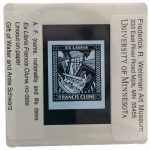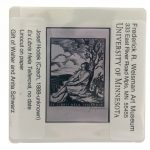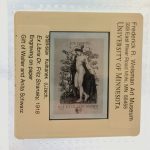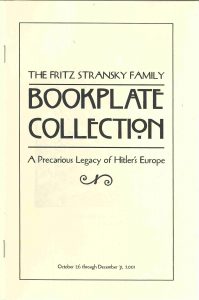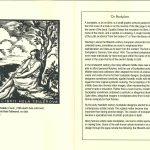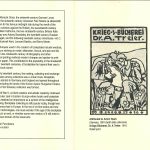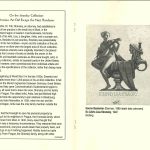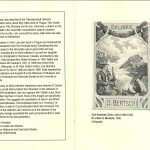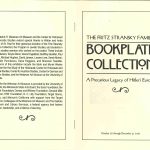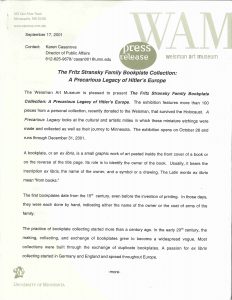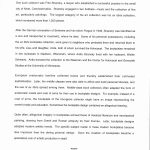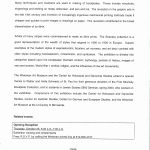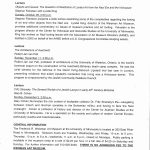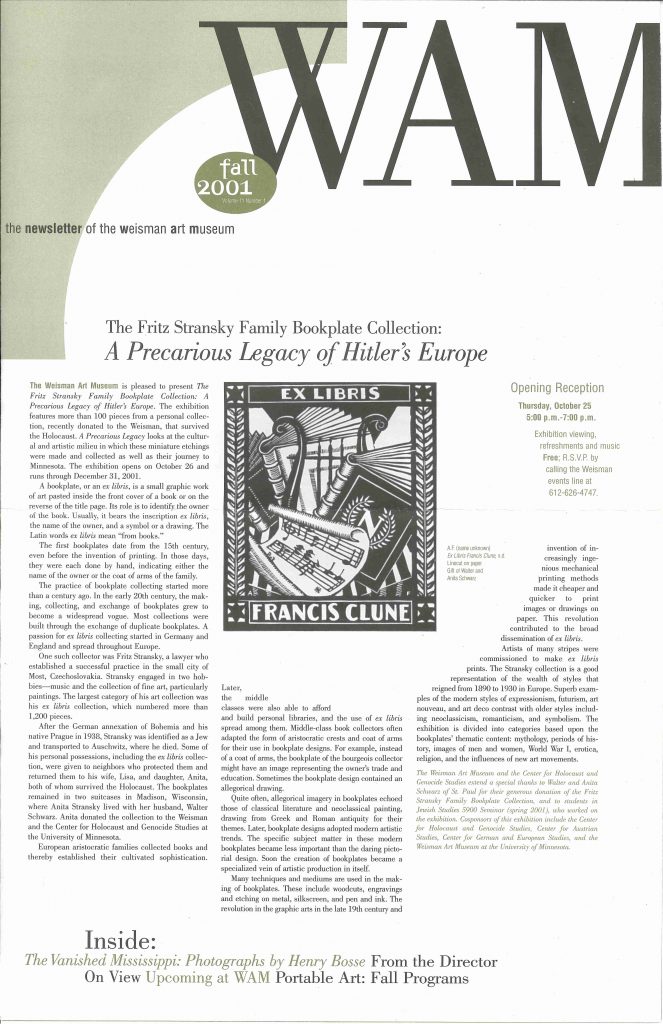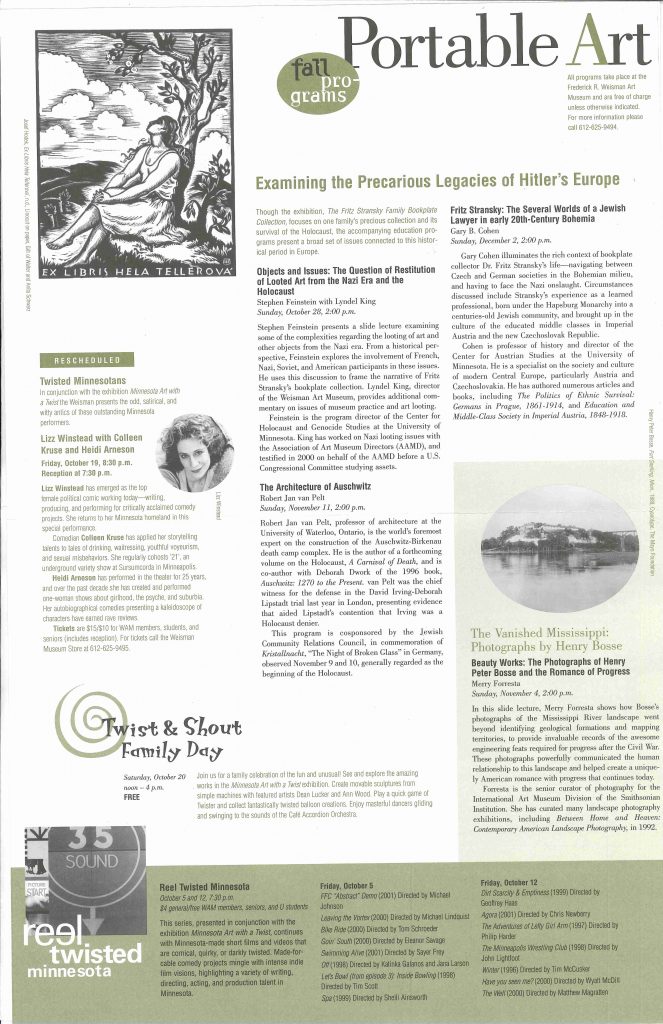Life is so often in the details, all the little things mixed up together that make your life yours. Artist Lawrence Weiner may have put it best in his public artwork formerly on the exterior of the Walker Art Center: “Bits and pieces put together to present a semblance of a whole”.

Many art exhibitions pull together the most exemplary highlights of a movement or time period, an artist’s career, the most brilliant or desired works in a collection or shining stars of a thematic discourse…in short: The Most. On the other hand, Sometimes exhibitions leave The Most and cross over into a different territory with items so mundane or so unknown or so unusual that we gain a new perspective or a different understanding about the bits and pieces of life. I felt this a few years ago at the Minneapolis Institute of Art’s eye-opening exhibition “The Look of Love”, a collection of Georgian eye miniatures gathered by the David and Nan Skier.
I experienced this again in discovering archival materials about the Weisman Art Museum’s 2001 exhibition The Fritz Stransky Family Bookplate Collection – A Precarious Legacy of Hitler’s Europe. The title alone exploded with questions for: Who is Fritz Stransky and his family? What does it have to do with Hitler’s Europe? Why is a bookplate collection interesting or important? Why is the whole thing so precarious? My curiosity was piqued and slowly my questions were answered over the months of processing WAM’s archival materials. First, I found an invitation to the exhibition’s opening. Weeks later, I discovered some slides of the bookplate artworks, then some drafts of the museum labels and a press release. Months later, the last items I found were the exhibition booklet and WAM newsletter containing so many answers.
From a draft of the exhibition’s label text, this exhibition contained “some 100 miniature prints from a personal collection that survived the Holocaust. The special exhibition examines the cultural and artistic milieu in which these bookplates were made and collected as well as their extraordinary journey from Czechoslovakia to Minnesota.”
Who are Fritz Stransky and his family? What does this have to do with Hitler’s Europe?
“Fritz Stransky, an avid bookplate and fine art collector and a lawyer by profession, was arrested and transported to Auschwitz concentration camp, where he died. Before he was arrested he gave some of his personal possessions, including the bookplate collection, to neighbors for protection. After World War II, this family returned the Stransky belongings to Mrs. Stransky and her daughter, Anita, both of whom survived the Holocaust. The bookplates remained in two suitcases in Madison, Wisconsin, where Anita Stransky lived with her husband, Walter Schwarz until they moved to St. Paul. She donated them to the Weisman Art Museum and the Center for Holocaust and Genocide Studies after the death of her mother in 1995.”
Why is a bookplate collection interesting or important?
“The Fritz Stransky collection represents a popular European hobby in the late 19th and early 20th centuries—bookplate collecting. The Stransky family lived in Czechoslovakia, a country within the lands of the former Austro-Hungarian Empire. Germany and Austro-Hungary were particularly strong outposts for bookplate creation and collecting. The exhibition includes etchings, engravings, lithographs, woodcuts, and more…These bookplates display the wealth of artistic styles that reigned between 1890 and 1930 in Europe. Superb examples of the modern styles of expressionism, futurism, art nouveau, and art deco contrast with older styles including neoclassicism, romanticism, and symbolism. The exhibition is divided into categories based upon the bookplates’ thematic content: mythology, periods of history, images of men and women. World War I, erotica, religion, and the influences of new art movements.”
To read more, click the exhibition booklet and finished press release:

From WAM’s Fall 2001 newsletter: “Though the exhibition The Fritz Stransky Family Bookplate Collection, focuses on one family’s precious collection and its survival of the Holocaust, the accompanying education programs present a broad set of issues connected to this historic period in Europe.”
Programs included the following lecture/talks:
- Objects and Issues: The Question of Restitution of Looted Art from the Nazi Era and the Holocaust, presented by Stephen Feinstein with Lyndel King
- The Architecture of Auschwitz, presented by Robert Jan van Pelt
- Fritz Stransky: The Several Worlds of a Jewish Lawyer in Early 20th-Century Bohemia, presented by Gary B. Cohen
The Stransky story could have fallen apart and off the pages of history at so many points: if the neighbor family in Prague entrusted with Stransky’s belongings hadn’t been able to keep their promise; if none of the Stransky family had survived the concentration camps or had decided not to go back to Prague; if the suitcase of small prints had been forgotten along the way or been eaten by bugs while being stored in an attic or basement; if decedents hadn’t realized the value of these bookplates both as art objects and in representing their own family story. Precarious legacy, indeed. But the story didn’t fall apart or off the pages of history, but rather found a new home of research and access at UMN–“the bits and pieces put together to present a semblance of a whole.”
—Heather Carroll is the processing archivist for the Weisman Art Museum‘s collection at the University of Minnesota Archives. This project was made possible by funds provided by the State of Minnesota from the Arts and Cultural Heritage Fund through the Minnesota Historical Society.
